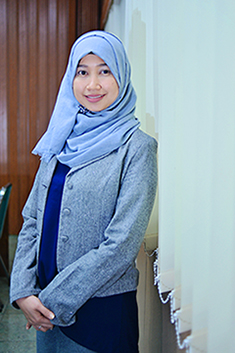Identifikasi Pengetahuan, Sikap, Tindakan Masyarakat dalam Memusnahkan Obat Kedaluwarsa dan Tidak Terpakai Di Rumah Tangga
Downloads
Amster, E. D. (2016). Mitigating Pharmaceutical Waste Exposures: Policy and Program Considerations. Israel Journal of Health Policy Research; 5; 1–4.
Banwat, S. B., Auta, A., Dayom, D. W. & Buba, Z. (2016). Assessment of the Storage and Disposal of Medicines in Some Homes in Jos North Local Government Area of Plateau State, Nigeria. Tropical Journal of Pharmaceutical Research; 15; 989–993.
Barnett-Itzhaki, Z., Berman, T., Grotto, I. & Schwartzberg, E. (2016). Household Medical Waste Disposal Policy in Israel. Israel Journal of Health Policy Research; 5; 1–8.
Gupta, R., Gupta, B. M. & Gupta, A. (2019). A Study on Awareness Regarding Disposal of Unused Medicines Among Consumers at a Tertiary Care Teaching Hospital of North India. International Journal of Advances in Medicine; 6; 91.
Hermansyah, A., Pitaloka, D., Sainsburya, E. & Krassa, I. (2018). Prioritising Recommendations to Advance Community Pharmacy Practice. Research in Social and Administrative Pharmacy; 14; 1147–1156.
Hermansyah, A., Sainsbury, E. & Krass, I. (2016) Community Pharmacy and Emerging Public Health Initiatives in Developing Southeast Asian Countries: a Systematic Review. Health and Social Care in the Community; 24; e11–e22.
Iswanto, I., Sudarmadji, Wahyuni, E. T. & Sutomo, A. H. (2016). Timbulan Sampah B3 Rumah Tangga Dan Potensi Dampak Kesehatan Lingkungan di Kabupaten Sleman, Yogyakarta (Generation of Household Hazardous Solid Waste and Potential Impacts on Environmental Health in Sleman Regency, Yogyakarta). Jurnal Manusia dan Lingkungan; 23; 179.
Kristina, S. A., Wiedyaningsih, C., Cahyadi, A. & Ridwan, A. A. (2018). A Survey on Medicine Disposal Practice Among Households in Yogyakarta. Asian Journal of Pharmaceutics, 12; S955-S958.
Raini, M. & Isnawati, A. (2016). Profil Obat Diare yang Disimpan di Rumah Tangga di Indonesia Tahun 2013. Media Litbangkes; 26; 227–234.
Seehusen, D. A. & Edwards, J. (2006). Patient Practices and Beliefs Concerning Disposal of Medications. Journal of the American Board of Family Medicine; 19; 542–547.
Shaaban, Alghamdi, H. H., Alhamed, N., Alziadi, A. & Mostafa, A. (2018). Environmental Contamination by Pharmaceutical Waste: Assessing Patterns of Disposing Unwanted Medications and Investigating the Factors Influencing Personal Disposal Choices. Journal of Pharmacology and Pharmaceutical Research; 1; 1–7.
Sim, S. M., Lai, P. S. M., Tan, K. M., Lee, H. G. & Sulaiman, C. Z. (2018). Development and Validation of the Return and Disposal of Unused Medications Questionnaire (ReDiUM) in Malaysia. Asia-Pacific Journal of Public Health, 30; 737–749.
Sonowal, S., Desai, C., Kapadia, J. D. & Desai, M. K. (2017). A Survey of Knowledge, Attitude, and Practice of Consumers at a Tertiary Care Hospital Regarding the Disposal of Unused Medicines. Journal of Basic and Clinical Pharmacy; 8; 4–7.
Teni, F. S., Surur, A. S., Belay, A., Wondimsigegn, D., Gelayee, D. A., Shewamene, Z., Legesse, B. & Birru, E. M. (2017). A Household Survey of Medicine Storage Practices in Gondar Town, Northwestern Ethiopia. BMC Public Health; 17; 1–9.
Wondimu, A. Molla, F., Demeke, B., Eticha, T., Assen, A., Abrha, S. & Melkam, W. (2015). Household Storage of Medicines and Associated Factors in Tigray Region, Northern. PLoS ONE; 10; 1–9.
1. The copyright of this journal belongs to the Editorial Board and Journal Manager with the author's knowledge, while the moral right of the publication belong to the author.
2. The formal legal aspect of journal publication accessibility refers to the Creative Commons Attribution-Non-Commercial-Share Alike (CC BY-NC-SA), which implies that the publication can be used for non-commercial purposes in its original form.
3. Every publication (print/electronic) is open access for educational, research, and library purposes. In addition to the objectives mentioned above, the editorial board is not responsible for copyright infringement


.jpg)















